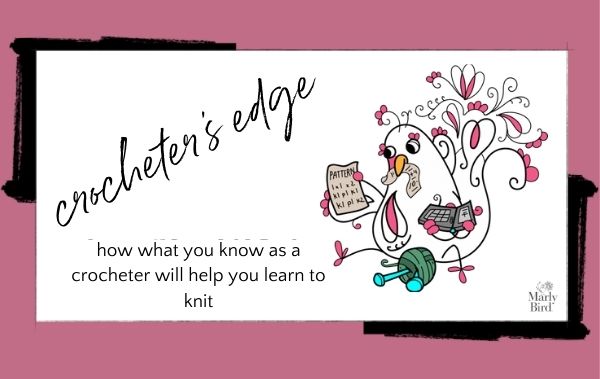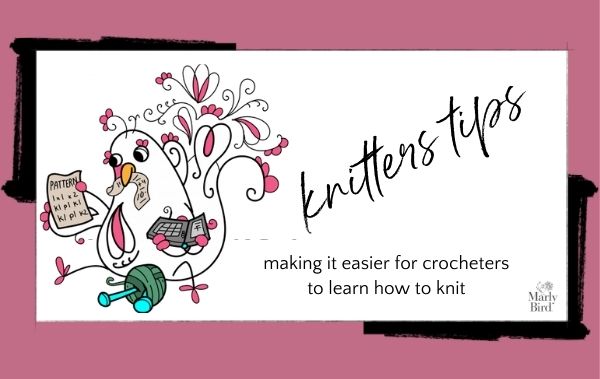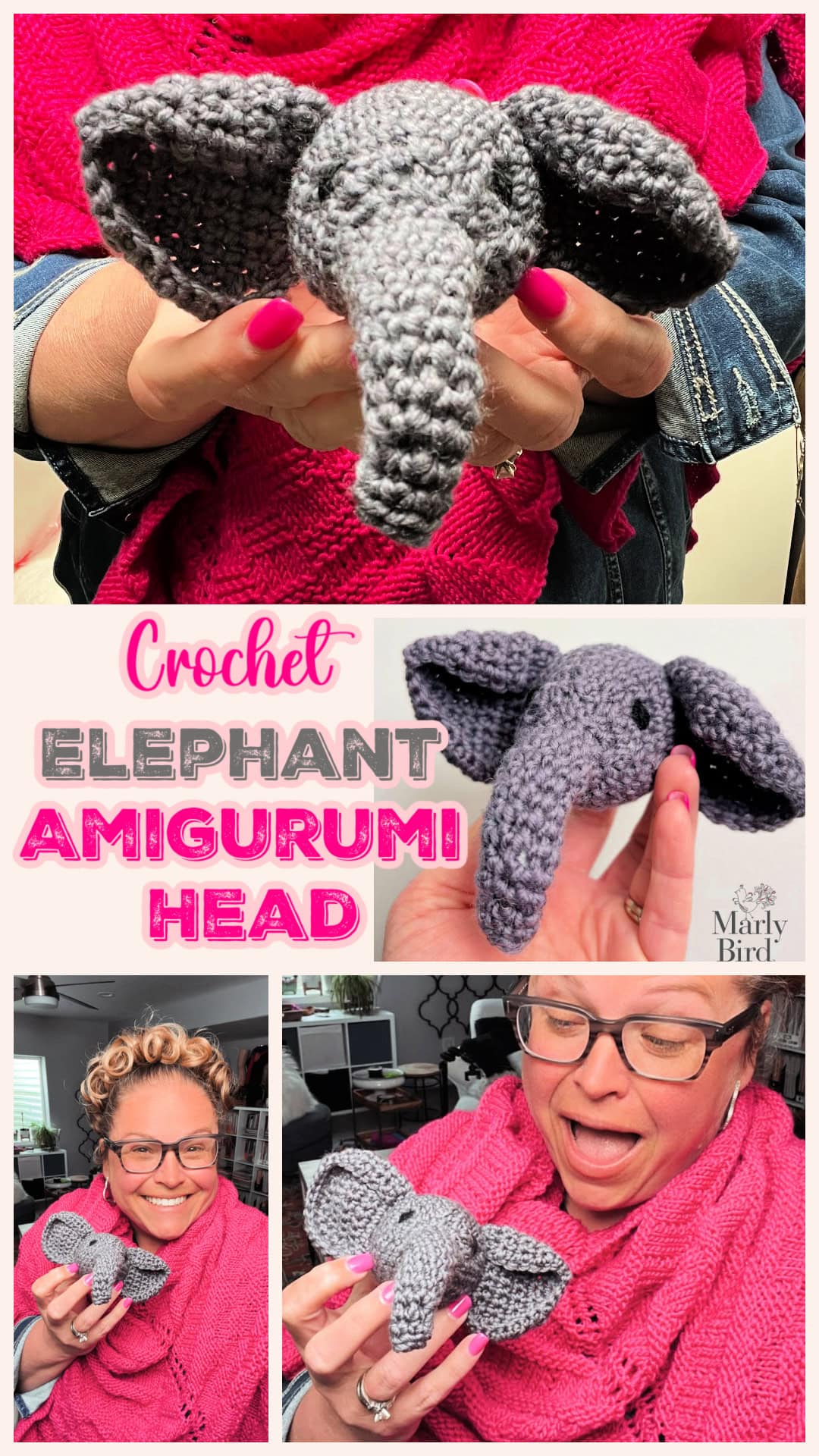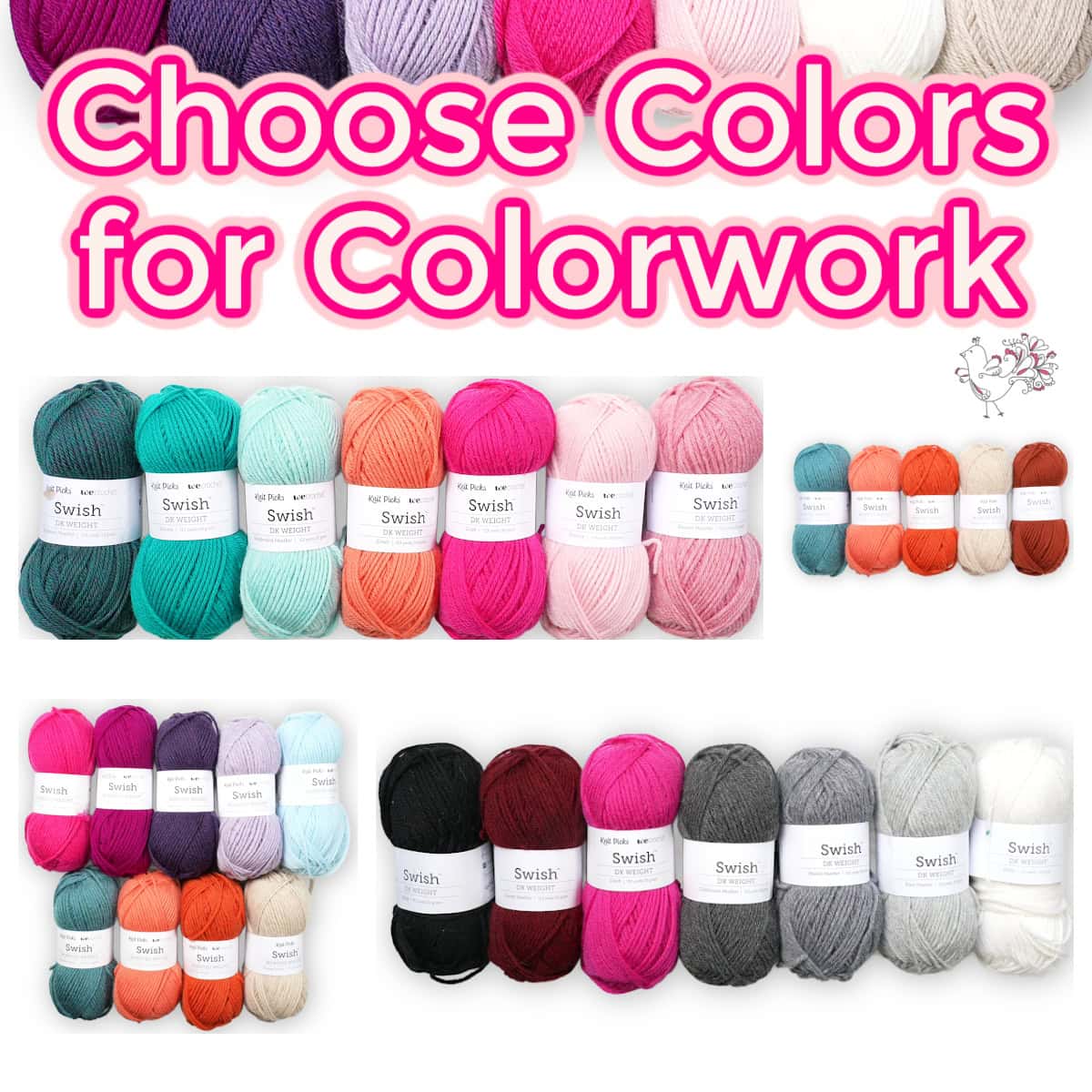How to Knit Seersucker Stitch and Long Slip Texture Stitch, Knit Sampler Stitch Cowl Continued (Knitting Lessons for Crocheters, Lesson 9)
Welcome back to BiCrafty Bootcamp with Marly Bird. If you’re all caught up then you’ve gotten a good start on your knit sampler stitch cowl worked in the round. (If you’re not all caught up, that’s okay. All of the lessons are right here and you can go at your own pace if you need to!) Today we’ve got a little update on our next steps as well as the next stitch pattern instructions for your knit sampler stitch cowl.
BiCrafty Bootcamp Month Two Status Update
When we started working in the round at the beginning of the month, we expected to make a hat and have you knitting on DPNs by the end of the month. However, we switched gears and decided to start by knitting a sampler stitch cowl first. This has given us the opportunity to learn a variety of different stitch patterns. Moreover, we’ve really built up our muscle memory for those knits and purls, which goes a long way towards being able to do more advanced knitting techniques.
So far for this cowl we learned how to knit K1, P1 ribbing in the round. Then we learned how to knit seed stitch in the round. Last week we learned a four round repeat for double moss stitch. And if you also did the surprise extra credit last week then you learned a new stitch pattern that also taught you how to slip stitch.
As Marly explained in last week’s LIVE, she plans to add two more sections of different stitch techniques to this knit sampler stitch cowl. We’ll have the instructions for two of those below. Then we’ll wrap up with a return to the ribbing so that the top and bottom of the cowl have a similar look. After that, we can cast off and you’ll have a finished knit cowl that has a lot of great stitches in it.
From there, Bicrafty Bootcamp will move on to the complementary hat pattern, in which we will learn shaping and working on DPNs.
How to Knit Seersucker Stitch and Long Slip Texture Stitch
Crocheter’s Edge

As mentioned last week, you might not even really need these crocheter’s edge tips anymore. You’re really a knitter now. However, you might still find it helpful to apply what’s comfortable in crochet to what you’re learning in knitting. By the way, we would LOVE to hear how your crochet skills have helped you as you learn to knit so feel free to leave a comment, share those thoughts on social media with hashtag #bicraftybootcamp, or send an email to [email protected].
This week you’re working on patterns that have multiple row repeat, which you also worked on last week. Being a crocheter is likely helping you with that concept. You’ve worked on crochet patterns where you crochet different stitch combinations from round to round for three or four or five rounds then you repeat that same pattern again and again to grow your piece. That’s exactly what you’re doing here. It may sound like a little thing, but if you were brand new to yarncrafting, then you’d have to master that concept. As a crocheter, it’s probably already second nature. You probably didn’t even think twice about it because it just made sense that you do something for four rounds then do it again for the next four and so forth.
Knitter’s Tips for Crocheters

BiCrafty Bootcamp Knit Sampler Stitch Cowl Pattern Continued
You’re going to pick up where you left off with your knit cowl.
➸ If you ended with “Extra Credit” rounds, jump directly to round 1.
➸ If you ended with Double Moss Stitch, start with the 2 rounds of knit before staring with round 1.
Pattern Stitch #1 Seersucker Stitch in Knitting
Knitting the Seersucker stitch is very similar to the seed stitch and double moss stitch in that you are working a combination of knits and purls all within the same round. With this pattern, you need to pay attention on each round because the location of the purl is changed every 2 rounds. You do not want to get mixed up.
This stitch pattern is a multiple of 4 sts and an 8-rnd repeat.
Rounds 1 and 2: *K1, p1; repeat from * to end.
Rounds 3 and 4 *P1, k3; repeat from * to end.
Rounds 5 and 6: *K1, p1; repeat from * to end.
Rounds 7 and 8: K2, *p1, k3; repeat from * to last 2 sts, p1, k1.
➸ For the stitch pattern, you then repeat rounds 1–8 for Seersucker Stitch in the Round.
➸ For the cowl, I would repeat rounds 1-8 twice more or until this section is as large as you wish it to be. *edited to add on 6-5-21: on the final pattern pdf, I only wrote it to be one more time…because it made this section the same as size as my other sections.
Last round: Knit
Pattern Stitch #2 Long Slip Texture
Knitting the Long Slip Texture stitch is a little twist on basic stockinette. Instead of just knitting every round (or knitting 1 row and purling 1 row in flat knitting) you will slip 1 stitch every other stitch.
The slipped stitch does shift so you need to pay attention to that but overall, this is a perfect way to compliment the slipped stitches we did for the extra credit last week.
*edited to add: this section can be made with a larger needle to help with getting the gauge to match the other sections if you find you are struggling.
Rounds 1, 2, 3: *Slip 1 with yarn in back (WYIB) as if to purl, k1; repeat from * to end.
Round 4: Knit
Rounds 5, 6, 7: *K1, Slip 1 WYIB as if to purl, repeat from * to end.
Round 8: Knit
➸ For the stitch pattern, you then repeat rounds 1–8 for Long Slip Texture in the Round.
➸ For the cowl, I would repeat rounds 1-8 twice more or until this section is as large as you wish it to be. *edited to add on 6-5-21: on the final pattern pdf, I only wrote it to be one more time…because it made this section the same as size as my other sections.
Last round: Knit
Need help? Watch this week’s video for BiCrafty Bootcamp lesson 9 🙂
Additional Videos and Patterns You’re Ready For Now
If you like to take your experience to the next level then you might want to check out these videos: TBA
And you’re ready to start trying these patterns: TBA












I think we should name this cowl “Practice Makes Perfect.”
The more patterns that I am I the better it looks. My k1p1 is a bit of a mess. I really should have picked a light color so that I could see stitches better
For the long slip texture, which way do you slip the stitch, knit wise or purl wise?